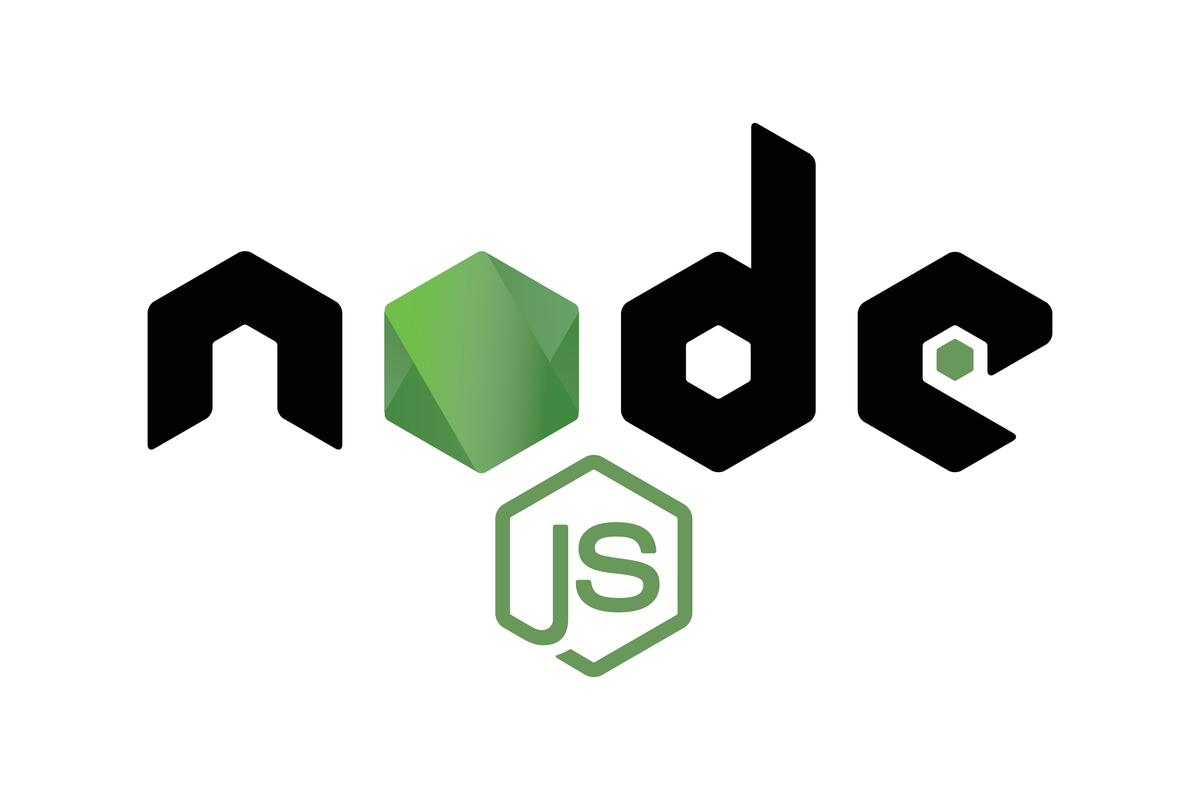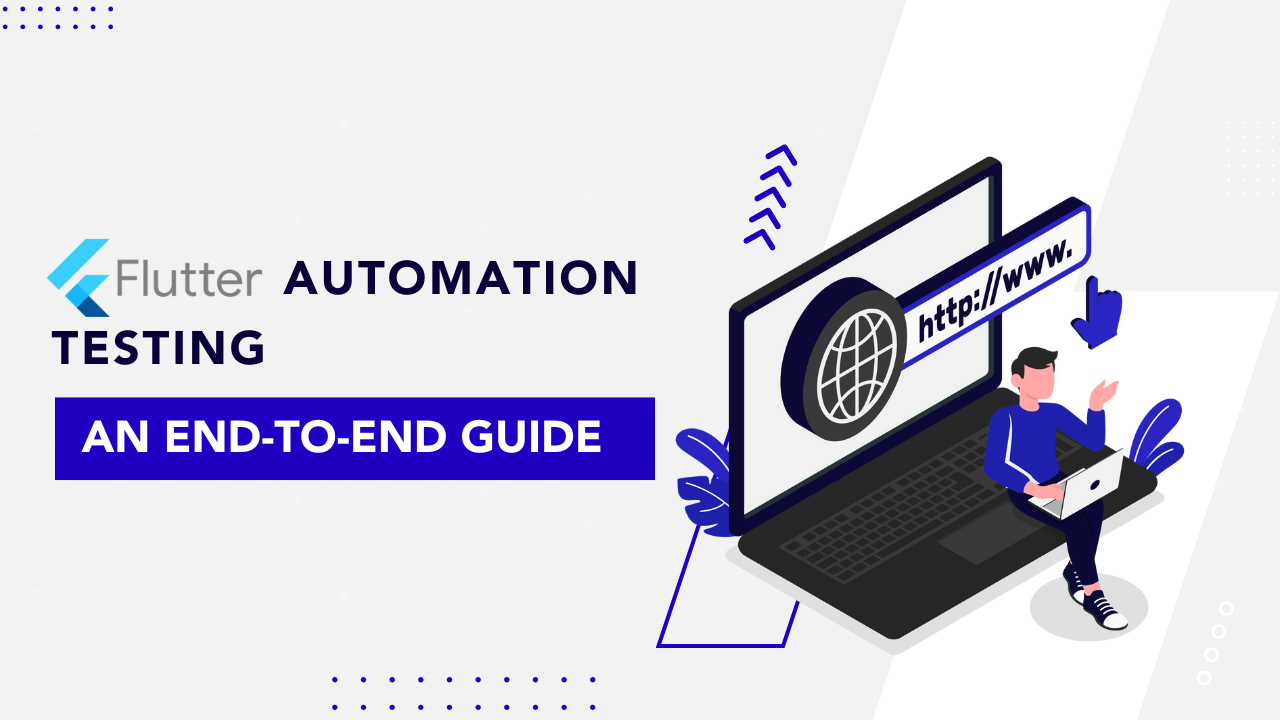
by admin | Oct 27, 2019 | Mobile App Testing, Fixed, Blog |
The advances of smartphones continue to grow constantly, the improvement of mobile technology has allowed us more options in how we approach both our work and leisure activities. Over the past 23 years, smartphones have changed the way we live our lives. From checking the weather updates to efficiently running a business, we often rely on these small powerful devices to complete our daily tasks with ease. Since their first introduction, smartphones have consistently evolved to meet our growing needs in the form of faster wireless connections, sharper images, greater memory storage, etc.
In 1926, during an interview for “Collier” magazine, legendary scientist and inventor Nikola Tesla described a piece of technology that would revolutionize the lives of its users. Here’s the quote:
When wireless is perfectly applied, the whole earth will be converted into a huge brain, which in fact it is, all things being particles of a real and rhythmic whole. We shall be able to communicate with one another instantly, irrespective of distance. Not only this, but through television and telephony we shall see and hear one another as perfectly as though we were face to face, despite intervening distances of thousands of miles; and the instruments through which we shall be able to do he will be amazingly simple compared with our present telephone. A man will be able to carry one in his vest pocket.

While Tesla might not have chosen to call this instrument a smartphone, his foresight was spot on. The history and evolution of the smartphone are important to understand because it gives us a glimpse of where we’ve come from, and of what’s coming. That goes for improvements in technology as well as consumer trends. So let’s take a look at just how far we’ve come.
The World’s First Smartphone
The device had many of the modern elements we attribute to current smartphones and mobile devices. Highlights included:
- Touch screen
- Email
- Fax
- Notes and Calendar
- Apps and other widgets that would become widespread decades later.
The Simon was advanced for its time but has nothing on the smartphones of today. It only had a small monochrome LCD screen and a one-hour battery life. Clearly, though, Simon created a great launching pad for others to innovate.
BlackBerry
Blackberry’s first wireless handheld computer, RIM 850, is announced in July 1999,The device garnered popularity in the business world with its ability to connect people by having some key features like
- Calendar
- Music
- A full keyboard
- Advanced security
- Internet access
Apple unveils iPhone in 2007
Apple had already begun transforming how people use portable technology with the iPod, and the stage was set for them to unveil their latest device in 2007. Among some of the groundbreaking features was an expansive and responsive display from which to check email, stream video, play audio, and browse the internet with a mobile browser that loaded full websites, much like what’s experienced on personal computers. Apple’s iOS operating system allowed for a wide range of intuitive gesture-based commands and eventually, a rapidly-growing warehouse of downloadable third-party applications.
Steve Jobs says it’s “a revolutionary and magical product that is literally five years ahead of any other mobile phone.” Apple’s version took it to a whole other level as a full-blown multimedia powerhouse, enabling users to play games, watch movies, chat, share content, and stay connected to all the possibilities that we’re all still constantly rediscovering.
Evolution of Android:
Andy Rubin was developing his own version of a mobile OS called Android. After being purchased by Google, the first Android phone was released in 2008. Android has become the world’s most popular operating system in 2011, by the start of 2012, Android officially ruled the smartphone market share worldwide. The reason behind its popularity is that the OS is open-source, it allows the developers to play with the code allowing them to modify the code as per their needs. At present Android has one of the largest communities of Application Developers writing and developing a large number of mobile applications that extend the functionality of the device.

The Change:
Now that we’ve seen how smartphones have changed the way we communicate over the last 20+ years, let’s evaluate some of the big ways smartphones have changed the way we do business:
1. Creation of the “right now” culture Smartphones give us access to the world’s database of information within seconds. This has raised consumer expectations when it comes to immediate gratification. Not only do people expect prompt responses to communications, but they also want to access the purchasing process for any good or service easily and instantaneously.
2. Farewell to office space well, not entirely. But thanks to smartphones, telecommuting is a realistic way of operating for many. Thanks to tools like Slack, FaceTime, Skype, you can access a virtual desk on your smartphone from anywhere in the world.
3. Advertisers delight Smartphones (and the apps that are on them) opened up a completely new space for advertisers to serve content. The revenue generated from mobile ads is substantial and becoming the bread and butter for many businesses.
4. Social butterflies nearly 80% of all time spent on social media is on mobile devices. This radical change has resulted in millions of businesses flocking to social media and pouring their time and energy into interacting with customers through that space.

by admin | Oct 26, 2019 | Automation Testing, Fixed, Blog |
As a business you would constantly be mulling over reducing testing and automation costs, albeit without conceding or making concessions on the quality of your product. Those who may have erred would understand the disastrous consequences for their business with regard to poor quality products resulting from shoddy software testing. As a leading Test Automation Company we know the major overhaul required post-release for applications and software in order to save company reputation and prevent loss of user loyalty. Companies spend big monies on allocating a large number of resources for software projects, and yet there are no guarantees that the ROI would justify these humongous expenses. On the other end of the spectrum, some companies allocate too few resources, which too prove detrimental to the ‘health’ of envisaged the software/application.
It is, therefore, necessary to find a perfect balance of time, costs, and effort, and it makes sense to partner with a company experienced in delivering top-class automation testing services within budgets and timelines. We enlist some ways to bring down the costs of testing and automation without any compromise on the quality and output of the software.

Testing as Early as Possible
As an experienced Automation Testing Company we always recommend testing products early on in the SDLC to avoid problems and errors close to release or post-release. It is important for the QA and development teams to work cohesively and in collaboration in order to reduce the possibilities of production errors. It stands to reason that the earlier errors are identified the cost of rectifying them would be a lot lower than the costs for the ones discovered post-release – in fact in our experience, fixing defects and bugs at a later stage costs at least 30 times more than doing so at the prototype stage.
Testing Strategy must Balance Costs and Benefits
Most companies make the costly mistake of assessing efficiency by way of test coverage versus cost. This is incorrect since test coverage, is not an efficient metric – low test coverage is mostly a cause of problems, while high test coverage may not actually mean anything. Right test coverage is important and it is possible to know what this through simple methods. The production stage should rarely have bugs and changing code would not be a feared activity – these are two criteria that make the right test coverage. It is important that only the optimal time and resources are spent on test coverage, and hence both teams (development and QA) must work together to ensure the best test coverage, with minimal errors and costs.
Outline Goals and Expectations
An experienced testing partner will ask relevant and suitable questions in order to understand the product quality required by a business. The answers to these questions would serve as the foundation and stepping stones to ensure optimal and top-class product quality. The goals and expectations should get answered through the right questions, based on which the testing team would be able to put together some key performance indicators. These should include the types of testing, milestones and due dates of testing, possible risks, and challenges. An experienced testing team will ensure balanced and wise automated testing such that time, money, and effort are used minimally.
Quality is Better than Quantity
Partnering with an experienced, expert, and skilled company would get you all the services required within a budget and timelines, and higher quality than you may believe possible. It does not make sense to hire expensive human resources to handle projects that may or may not be qualified to understand the needs and requirements of the business. We have helped several clients with their projects, achieving a high level of success through ensuring top-quality products consistently. Outsourcing to us as the QA experts will get you all the benefits your project deserves.
In Conclusion
As experts, we endorse the view that testing and automation are the cornerstones for high quality applications and software. Yes, everything requires an investment of time, money, and effort, and it is imperative for a company to weigh the costs against the benefits of test automation. Enlisting the services of professionals will ensure that your business will get the best strategy and coverage for the project in question and for future projects as well. As a skilled company we offer – the use of the best tools, ways to hasten the process, remain mindful of possible challenges and bottlenecks, make the process easier and more accessible, keep to timelines, and most importantly keep costs to the minimum – all of this with top-class customer service. We at Codoid provide the Best Automation Testing Services to stride ahead of your competition and to ensure that your products continue to be loved and used by your target audience.

by admin | Oct 25, 2019 | Automation Testing, Fixed, Blog |
It is an easy job for a manual tester to assert whether a test step has passed/failed from the outcome. However, in automation testing, we need to script the assertion point wherever it is required. If you have written scripts without assertions, then your automation test scripts don’t add any value to your testing. The reason is after test automation execution, we need a confirmation that which all steps are passed and which all failed. So that, you can share feedback with your team confidently. In this blog article, we have listed the most widely used Java Assertions Libraries.
Truth
Truth makes your test assertions and failure messages more readable. Similar to AssertJ, it natively supports many JDK and Guava types, and it is extensible to others. Truth is owned and maintained by the Guava team. It is used in the majority of the tests in Google’s own codebase. Truth assertions are made with chained method calls, so IDEs can suggest the assertions appropriate for a given object.
AssertJ
AssertJ is a java library providing a rich set of assertions, truly helpful error messages, improves test code readability, and is designed to be super easy to use within your favorite IDE. AssertJ’s assertions are super easy to use: just type assertThat followed by the actual value in parentheses and a dot, then any Java IDE will show you all assertions available for the type of the object. No more confusion about the order of “expected” and “actual” value.
Valid4j
A simple assertion and validation library for Java that makes it possible to use your favorite hamcrest-matches to express pre-and post-conditions in your code. Use the global default policy to signal logical violations in your code or optionally specify your own handling.
datasource-assert
datasource-assert provides assertion API for DataSource to validate query executions. The assertion API is used for assertion methods such as assertEquals in JUnit and TestNG. Also, it comes with support for assertThat in AssertJ and Hamcrest.
Hamcrest
Hamcrest is a framework for writing matcher objects allowing ‘match’ rules to be defined declaratively. There are a number of situations where matchers are invaluable, such as UI validation, or data filtering, but it is in the area of writing flexible tests that matchers are most commonly used. This tutorial shows you how to use Hamcrest for unit testing.

by admin | Oct 24, 2019 | E-Learning Testing, Fixed, Blog |
The Flash phase-out is fast approaching and hence it has become imperative to migrate all E-learning courses from Flash to HTML5. We as experts in the realm of E-Learning App Testing (and more) corroborate that doing so is the top solution to save huge costs on restructuring existing courses or recreating them, while also conquering the incompatibility issue of devices and browsers of Flash Courses.
To avoid these unnecessary costs and delays due to rework, it is critical for companies to find the most suitable and economical ways to ‘convert/migrate’. Partnering with E-Learning Domain Testing experts will ensure that not only are you able to migrate E-Learning Courses from Flash to HTML5 economically but also do so faster than your competitors – we bring you some top tips. You need an expert since this is no mean task, especially if the E-learning courses are extensive and contain a large number of interactive elements. A trusted and experienced partner will ensure that this process is seamless, smooth, and not at all overwhelming for your business.

Identify and put together an ‘inventory’ of the E-learning courses to be migrated – this may seem obvious, but it is necessary to prepare a proper list of the Flash-based courses ‘qualifying’ for migration. This would mean courses that have the same levels of interactivity and were developed using the same scripting tool. Once this is in place, it would be easy to select the most appropriate conversion strategy.
The HTML5 courses must be simpler and shorter – Fewer bytes will ensure that download is faster, and would further ensure that the courses are easily accessible and user friendly even on mobile devices. Hence, while the HTML5 courses should have all the learning essentials, the data and elements must be as low as possible. Thorough scrutiny of the content would be necessary to differentiate between the necessary content and what could be rendered obsolete.
Deploying the Right Tools – As mentioned the scripting/authoring tools are extremely important, and hence it is necessary that there is a clear idea of which tools should be used and how best they can be used. The migration of all the E-learning courses from Flash to HTML5 could be extremely cumbersome and time-intensive if the right scripting/authoring tools are not used or used incorrectly. Courses with a high intensity of interactive and multimedia elements in the instructional design can be especially problematic to migrate without the proper authoring tool.
‘Rebuild’ Courses to Ensure Compatibility across Platforms – ‘Rebuild’ is a conversion methodology to redevelop obsolete software with a new authoring tool. This methodology ensures the proper output of HTML5, functionality without errors, and enables the optimal usage of the latest aspects of scripting tools. This in turn facilitates access across multi-devices and platforms.
‘Redesign’ to Integrate New Learning Approaches – If course content has a large number of interactive elements there are no source files or the course needs updating from an instructional design or content perspective, it is useful to use the ‘redesign’ methodology. This methodology also helps to integrate contemporary learning strategies such as micro and social learning, and many more. Microlearning includes resources such as PDFs, videos, info-graphics, and others, while social learning includes methods such as user-generated videos, podcasts, social media platforms, discussion boards online, and others.
In Conclusion
While this is not an exhaustive list of tips to migrate E-Learning Courses from Flash to HTML5 economically, it certainly is indicative of what is required. As experts in the E learning testing domain, we know that HTML5 is becoming the ultimate design solution, and we are ready to help your business make a smooth transition. Through the ‘migration’ E-learning experiences are elevated and ensure that the content is future-ready, scalable, and extremely versatile. In addition, it ensures that the E-learning content is mobile-friendly for the new-gen learners.
To ensure a swift and smooth conversion, connect with us to work with a qualified team with years of experience in this realm. Our experience in working on these projects has ensured that we remain aware of the challenges and possible obstructions, and the best ways to tackle them.

by admin | Oct 21, 2019 | Regression Testing, Fixed, Blog |
In today’s age of technology, software and applications are an important part of our lives, which was not so even a few years ago. The truth about software and apps is that they must go through a gamut of software testing before being released to the market. We at Codoid, as a Regression Testing Services company, run a range of tests for our clients to validate and verify the functionality and technical aspects of the software and applications they seek to release. It is our responsibility to ensure that the final product works the way it was intended by identifying bugs and any gaps existing between current and actual requirements. Software testing is a wide and complex gamut of tests, which can be run individually or in conjunction with each other depending on the project requirements.
These tests include Unit Testing, Integration Testing, Functional Testing, System Testing, Stress Testing, Performance Testing, Usability Testing, Acceptance Testing, Regression Testing & Beta Testing. It is our intention today in this exposition to focus on Regression Testing with tips and basics of this type of testing to help beginners/novices in the realm of software testing. We are a leading software testing company with comprehensive excellence in all realms and it is our endeavor to help young minds interested in this field to move to a level of expertise.

Defining Regression Testing
Regression Testing is the method of investigating software for problems that may arise post action in the software. These actions could include patching or any type of updates or modifications to code. This form of testing is run to confirm that these actions/changes do not affect other parts of the software, and also to verify that the additional code does not have any bugs or defects. The basis of Regression Testing is not tested actions but is important to ensure that updates run as intended and do not have any unforeseen and unwanted effects. It is therefore obvious that this form of testing must be conducted before the final rollout.
Salient Features of Regression Testing
- Usually automated since this is a method for verification, and hence test cases are run repeatedly. It is not feasible to run these test cases manually given that manual testing is cumbersome and time-consuming
- This testing is performed to check newly created code and to fix any bugs. It does depend on any programming language, but rather ensures that all bugs have been remedied and changes have not caused any functionality defects in the product
- Since it is a part of the release cycle, it becomes a mandatory step in test estimation.
When to Conduct Regression Testing and Can it be Performed Manually?
It takes many weeks and even months for the next release cycle to take place, and hence regression testing should be part of the release cycles daily. It is good to perform regression testing weekly, post-completion of product functional testing. As specified, the main aim of regression testing is to ensure that the new version of a product is bug-free. It is a common misconception that regression testing should always be automated – manual testing in some cases is possible too.
Selecting the Best Test Suite
Bugs occur when there are changes made to the code of a software build, and these bugs must be removed to ensure the top functionality of a product. When selecting a test suite for regression testing, therefore, the following must be remembered:
- Pay attention to rapidly changing functionalities
- Focus on the test cases covering changed modules
- Attention to the complex test cases
- Focus on integration of test cases that include major components and those that cover product core functionalities
- Special attention to frequently failing or prone to defects test cases
- Focus on test case priorities prior to the final execution
Various Types of Regression Testing
Following are the regularly used types of testing:
Corrective This is best to use when no changes have taken place in the specification of the product and this type of testing is speedy and efficient since it uses pre-existing test cases.
Retest-All As the name suggests, every aspect of a product is retested, while reusing test cases. Since this is a laborious and time-consuming method, it must not be used for minor changes to existing products.
Unit Regression Each code is viewed as a single unit and testers conduct this test prior to integration.
Partial Regression Testers use this form of testing to ensure that any code changes still allow the software to function as required. The single unit of code tested is integrated with pre-existing code.
Complete Regression This is necessary if the added/modified code would have had a major effect on the essence of the previous code. Additionally, if several parts of the code are being changed, this type of testing will be required.
Proven Methodologies for Regression Testing
These tried and tested methodologies have become best practices for regression testing. We as a leading software testing company fully endorse these practices and recommend that novices understand them as well.
- Continuous updating of the regression pack/suite is essential once all updates for a software build are over
- Keep focus on the paths most often used for building software
- Reuse tests instead of duplicating it.
- Re-use test cases that were successful in speedily identifying and fixing bugs
- To ensure that testers remain enthused and time is not wasted, repeatedly used regression test cases should be automated.
In Conclusion
We hope that we have been able to provide some basic understanding of Regression Testing for Beginners. Regression Testing is crucial and must be practiced sincerely. The good news is that there are several tools and experts to guide you along the way. We at Codoid can match your business requirements both in terms of budget and timelines – connect with us to work with the most experienced folks in this realm.

by admin | Sep 12, 2019 | Agile Testing, Fixed, Blog |
Software development has become increasingly complex in recent times because of which the popularity of Agile is on the rise. A larger number of software development teams are now using Agile as compared to the earlier popular, Waterfall. The onus of QA in such a scenario falls on the agile testing team, especially in the wake of the myriad challenges linked to the continuous demand on companies to deliver quality software.
Since agile development is gaining momentum, a software testing company focuses on building a team of testers who understand the processes and methodologies of agile development. Despite best efforts, this realm is not free of its share of ‘tests’ and we examine some of the key challenges faced by agile testers:

Adjusting to Last Minute Changes in Requirements
One of the biggest challenges faced by agile testers is adjusting to and remaining flexible to incorporate frequent changes in requirements. Since the addition, deletion, or updating of requirements is common in agile projects testers may sometimes have to scrap the work already completed or make changes to the work in progress. The inability of agile testers to adjust to changing requirements can affect the scope of testing, which in turn lead to the frustrating situation of delays in delivery or substandard products.
Accepting Testing as a Continuous Activity
Even the most experienced agile testers find it hard to accept that agile testing services are a continuous activity. In agile, testing cannot be considered merely a phase in software development, but rather the job of testers starts from the beginning of the software development process and continues through the SDLC. Hence, testers must work together with product owners to gain knowledge of the details of the ‘story’ and write acceptance criteria. In addition, they must be able to create accurate tests based on requirements and provide quick and relevant feedback to developers.
Coping with Insufficient Test Coverage
An agile testing team faces the pressure of inadvertently missing out on critical tests for a requirement given the frequent changes and continuous integration. Insufficient test coverage can also be a challenge for testers, especially when unanticipated changes occur within the code. Additionally, testers may sometimes skip the testing of certain functionalities and features to meet the continuous delivery demands of agile development. This, in turn, could result in some serious flaws in the software.

Learning to Validate Software Functioning without Documentation
Another challenge faced by agile testers is the non-availability of documentation. Since agile testing is carried out with practically zero documentation, the verification and validation of the software functioning without documentation can be a daunting task for testers.
Keeping Pace with Delivery while API Testing
Agile testers generally face the challenge of testing APIs because they lack the requisite skills, especially if they have mostly been performing manual or exploratory testing. A software testing company cannot miss API tests because software design now largely revolves around a service-oriented architecture that publicly exposes the APIs. Lack of skills for testing APIs may hamper the ability of a testing team to perform continuous testing and keep pace with delivery. Working with an expert and renowned software testing company would eliminate this risk.
Handling Communication Issues
In an agile software development project, communication plays a crucial role. However, the fast-paced environment may sometimes pose a challenge for the testing team because of the lack of proper communication among the members of the team or with the developers and product owners. Such a situation can be distressing from the QA standpoint because of the possibility of bugs in software. Outsource your QA testing activities to ensure focused attention to proper communication, both verbal and written.
Managing Performance Problems
The addition of more lines of code by developers can lead to performance problems, particularly when developers fail to ascertain the impact of the changes on end-user performance. Such problems in performance can be challenging for agile testers because they need to keep track of performance over time. It is their responsibility to identify the areas in the code, which could be causing performance issues and take speedy action to resolve the issues.
Fixing Broken Builds
Frequent changes in code by developers can increase the possibility of a broken build, and thus affect the functionality. With Software testing services markedly focused on fixing issues in software, agile testers face the challenge of ensuring that changes in code do not break the existing features. Hence, they would need to run a series of tests against each build.
Staying Focused
An agile team may lose focus at times because the testers must carry out multiple activities on a regular basis. It is the job of agile testers to set up a test environment, conduct continuous testing, fix broken builds, provide feedback to developers, and review test cases for unit, integration, and regression testing. Finally, they must also remain available during production release.
In Conclusion:
It is evident that an agile testing team faces unique challenges while performing software tests. However, if they understand the challenges and can adapt to changing requirements in an agile project, they would successfully deliver on the overall goal of the project. This can help the agile testing team to effectively manage the expectations of the clients and ensure the delivery of high-quality software. Connect with us to work with some of the best agile testers in the market today.


































